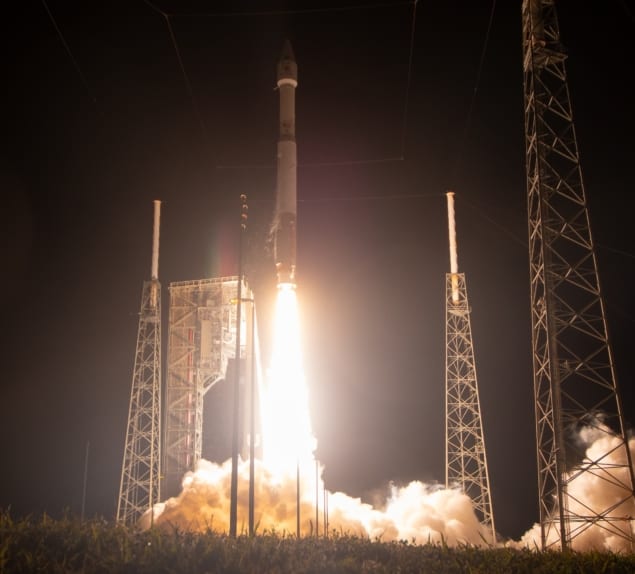
The European Space Agency (ESA) has launched a new mission to take the most detailed view yet of the Sun and its polar regions. The Solar Orbiter spacecraft will get as close as 42 million kilometres to the Sun – about a quarter of the distance between the Sun and Earth – to capture regions that have never been seen before and probe its electromagnetic environment. It was launched today on an Atlas V rocket from Cape Canaveral in Florida at 04:03 GMT.
It is the most important UK space-science mission for a generation
Chris Lee
Once in orbit around the Sun – with a maximum heliographic latitude of 24° – the spacecraft will have a close-up high-latitude view of the star, including its poles. The hope is that this positioning will improve our understanding of how the Sun creates and controls the heliosphere, the vast bubble of charged particles around the Sun and its planets. New information on the Sun and its atmosphere will also improve predictions of solar storms, which can disrupt satellites and infrastructure on Earth.
‘A big beast’
Solar Orbiter consists of six remote-sensing and four in situ instruments. The remote sensing equipment will perform high-resolution imaging of the Sun’s atmosphere and solar disc, while the in situ instruments will measure the solar wind, electric and magnetic fields and waves, and energetic particles.During orbit, the in situ instruments will run continuously while the remote-imaging instruments will operate when the craft is in the closest approach to the Sun as well as at the minimum and maximum heliographic latitudes. As the mission progresses, the orbital characteristics will change, with individual orbits being dedicated to specific science questions.

Solar physics, the quantum term that needs replacing and the acoustics of concert halls
The UK space industry has been heavily involved in the development of the Solar Orbiter mission, investing £20m in the development and building four of the instruments. “I am incredibly excited by the Solar Orbiter,” says Chris Lee, chief scientist at the UK Space Agency. “It is the most important UK space-science mission for a generation, both in terms of our leading industrial role on the satellite itself and our key academic roles on the science payload.” Lee adds that the mission is a “big beast” for the UK space community, with the mission also contributing to space-weather forecasting.
The Solar Orbiter will now unfold its 18 m-long solar array and fly past Earth once and Venus several times, using the gravity of the planets to adjust its trajectory and place it into its tilted, highly elliptical orbit around the Sun. It is expected to reach operational orbit in just under two years, with the mission scheduled to last seven years (including the initial two-year cruise), with a possible three-year extension.



